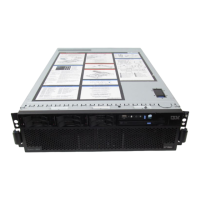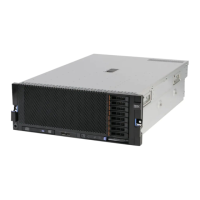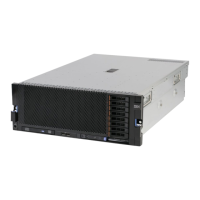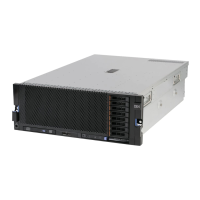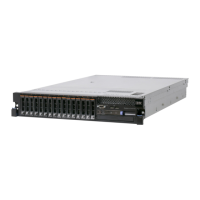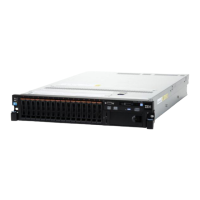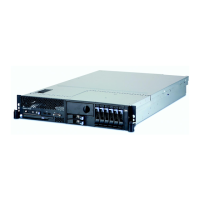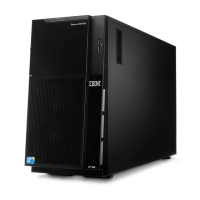164 IBM System x3850 X6 and x3950 X6 Planning and Implementation Guide
Here we list information regarding partitioning an x3950 X6:
By default, a single partition will be created out of both halves of the x3950 X6 (that is, to
form a single system image using all eight processors).
Each half independently maintains its own set of hardware such as storage backplanes,
power supplies, and each scalable partition is able to support its own independent
operating system installation. However, both halves must be at the same level of UEFI
firmware and IMM firmware.
Partitioning is performed at a whole node level of granularity. For example, if you have
eight processors in your x3950 X6, you cannot have a partition of 2 processors and a
partition of 6 processors. With 8 processors installed, partitions can only be 4 processors
(or 8 processors).
The x3950 X6 server must be shut down before partitions can be created or changed.
The bottom half of the x3950 X6 is considered the primary node in the complex. The
primary node provides the information to the secondary node regarding partitioning.
Partitions, after being created, cannot be expanded (for example, 4-socket partition to
8-socket partition). To create an 8-socket partition (the entire server), you must first
remove the existing 4-socket partitions.
Partition data remains consistent through reboots, shutdowns, and firmware upgrades.
Partitioning can be managed in two ways:
Via the IMM2 system management web interface
Via the IMM2 telnet interface
We describe the web interface in the following section.
5.6.1 Partitioning an x3950 X6 via the IMM2 web interface
The x3950 X6 server cannot be dynamically partitioned (while the system is powered on).
The system must be in powered off, but the power supplies must still be plugged into a power
source. This is done so you can still access the IMM2 to perform the partitioning functions.
The x3950 X6 server is made up of two nodes, an upper node and a lower node, which
correspond to the two physical halves of the x3950 X6. The nodes are joined together
internally via QPI links in the midplane to form an 8-socket server.
Nodes can exist in two states, as either an assigned node or an unassigned node:
Assigned node: These are servers that have been logically grouped together into a
partition. Assigned nodes will exist in one of two modes:
– Partition mode: Where all processors are one (up to eight-socket) server. When you
remove a partition, the partition grouping will be dissolved and the nodes will behave
as independent systems (stand-alone).
– Stand-alone mode: Where each half the processors is a separate server (each up to
four-socket) and is functioning as two individual servers.
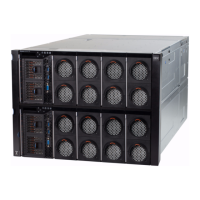
